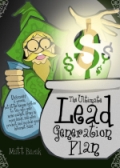“9 Copywriting Tips for Top Internet Copywriters”
Copywriting Tip #1: When you are writing copy, start with your “offer”. What are you going to offer? Who are you going to offer it to? An offer should convey how much the product is worth and how much you are going to charge for the product.
Copywriting Tip #2: Tell people the price of the product up front. Then substantiate the price. Give reasons why it is at a certain price. Examples include pointing out the price and value of your competitors.
Copywriting Tip #3: Tell people what the bonuses are in your offer.
Copywriting Tip #4: Provide scarcity and urgency. Tell people why they have to buy now. For example, have a time limit on your offer. Tell people what consequences will happen if they don’t buy your product right now. For example, let them know what they will miss out on. You have to get people to buy right then because any delay will substantially decrease the chances of a buy.
Copywriting Tip #5: Your Headline is critical. If it is ineffective then you can miss out on hundreds or even thousands of dollars. Five times as many people read the headlines as the body copy.
Copywriting Tip #6: On the average, ads with news are recalled by 22% more people than ads without news. Basically, people like helpful information.
Copywriting Tip #7: Photographs sell more than illustrations. Why? Because photographs are more believable.
Copywriting Tip #8: The length of your copywriting should be as long as it takes to get the job done and provide interesting information.
Copywriting Tip #9: Put your most convincing copy right up front. Hit people with your big guns first.
What’s the difference between Internet copy and regular paper copy?
Difference #1: The location and number of headlines is different.
The headline in a paper direct mail sales letter is usually on the outside of an envelope. It prompts people to open up the envelope because they are interested in reading more.
On a website, the headline includes the search phrase they used to find your website. Your website domain name is your second headline. A headline can also be the subject line in your email. Internet copy has many more instances of headlines.
Difference #2: Internet copy has to deal with browsers.
There are different browsers such as Internet Explorer, Netscape and FireFox. You need to make sure that your website works with all browsers.
Warmest regards,
Matt Bacak
P.S. If you haven't signed up for my
Powerful Promoting Tips yet, then you
are really missing out, go here:
http://www.promotingtips.com
P.P.S. Do you want to be updated on the new things I'm doing
to market my companies? Then you need to grab a copy of my
`Internet Marketing Dirt'. It's now better than ever before!
Go here and get a copy: www.internetmarketingdirt.com
Labels: copywriting, Copywriting tips, FireFox, Headline, Internet copy, Internet copywriting, Internet Explorer, Netscape




















































































